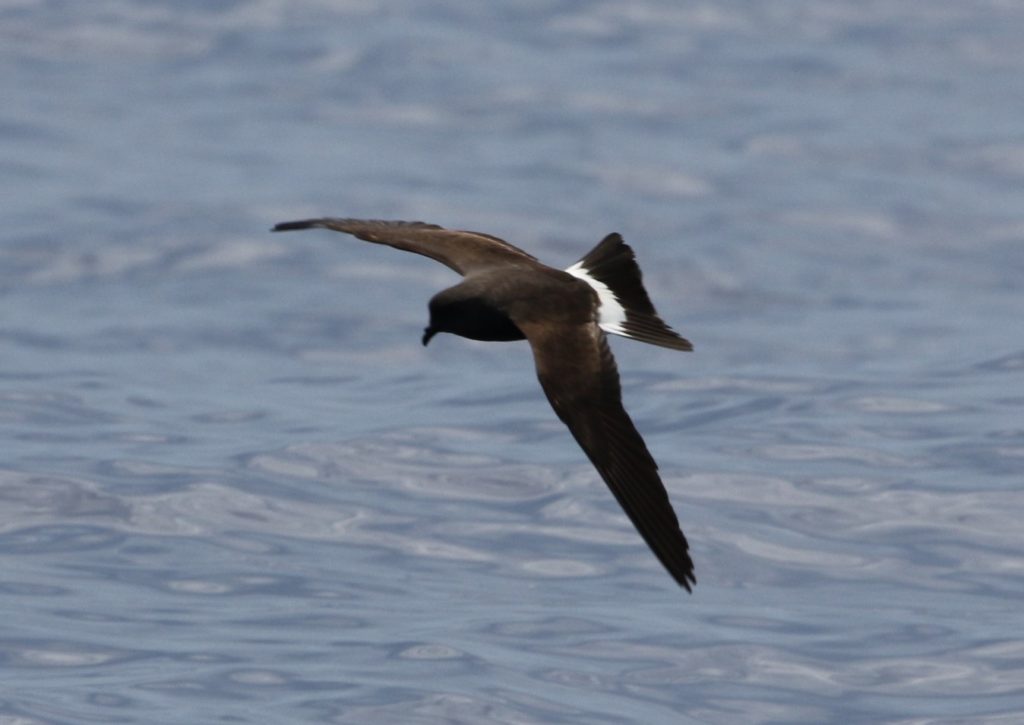Birdfinding.info ⇒ The Hawaiian endemic form of Band-rumped Storm-Petrel is rare and little-known overall, but locally common in the breeding season, between April and November. It is often seen offshore from Kauai, especially in Kaulakahi Channel, from the Big Island off of Kailua-Kona, and sometimes from shore at Keahole Point and Makahuena Point. Nighttime calls near breeding colonies are heard from May to July, peaking about two hours after sunset. Relatively accessible listening sites include Waimea Canyon on Kauai and Mauna Loa Observatory Road on the Big Island.
“Hawaiian Storm-Petrel”
Hydrobates castro cryptoleucurus
Breeds on main Hawaiian Islands; nonbreeding distribution unknown.
Breeding. Present from April to November at colonies on Kauai and the Big Island; likely also on other islands.
Nests in May and June in crevices on cliffs and steep, rocky slopes. Nocturnal vocalizations can be heard from May to July around known and suspected nesting areas. Juveniles fledge from around mid-September to early November.
Most known nesting areas are on Kauai, mainly along the Na Pali Coast and the steep canyons above it. Also nests in Waimea Canyon and elsewhere in the interior mountains.
On the Big Island, nesting has been confirmed on rocky slopes at middle and upper elevations (>1,200 m) of Mauna Loa, and is suspected on Mauna Kea and elsewhere in steep, rocky terrain.
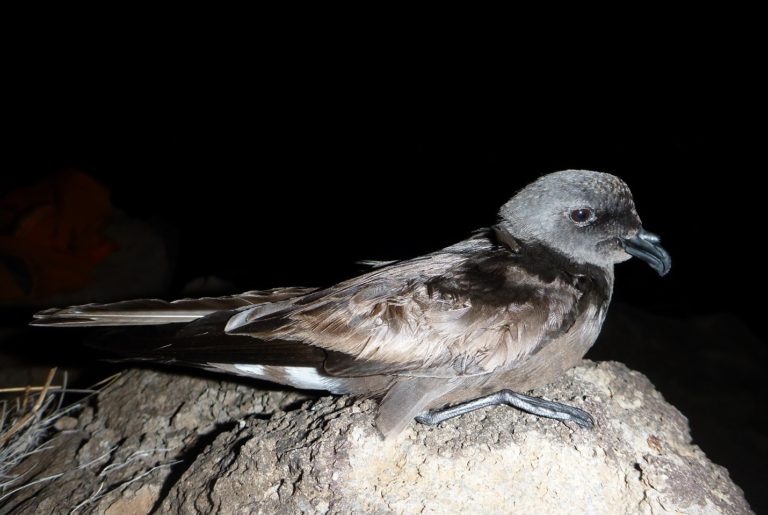
“Hawaiian Storm-Petrel”, H. c. cryptoleucurus, near known breeding colony along the Na Pali Coast of Kauai. (August 23, 2012.) © Andre Raine
Also suspected to nest on Lehua Islet (north of Ni’ihau), Molokai, Kaho’olawe, and Maui—where nighttime calls have been heard sporadically in Haleakala Crater.
Nonbreeding. Range at sea when not breeding remains unknown. A longtime historical lack of confirmed records from December through March implies that it might be migratory, spending the winter in a distant part of the Pacific. However, several mid-winter records of apparent band-rumped-type storm-petrels in the 2020s suggest to the contrary that it may remain within the central North Pacific—or, alternatively, the records may indicate that either “Japanese” or “Darwin’s Storm-Petrel” occurs in Hawaiian waters.
Identification
As a form or potentially cryptic species within the Band-rumped Storm-Petrel complex, “Hawaiian” is visually indistinguishable from other Pacific band-rumped-type storm-petrels.
Identification is based solely on geographical probability—i.e., any band-rumped-type storm-petrel observed in the tropical eastern Pacific is generally presumed to be “Darwin’s”, although this presumption becomes weaker westward, gradually shifting to “Hawaiian”.
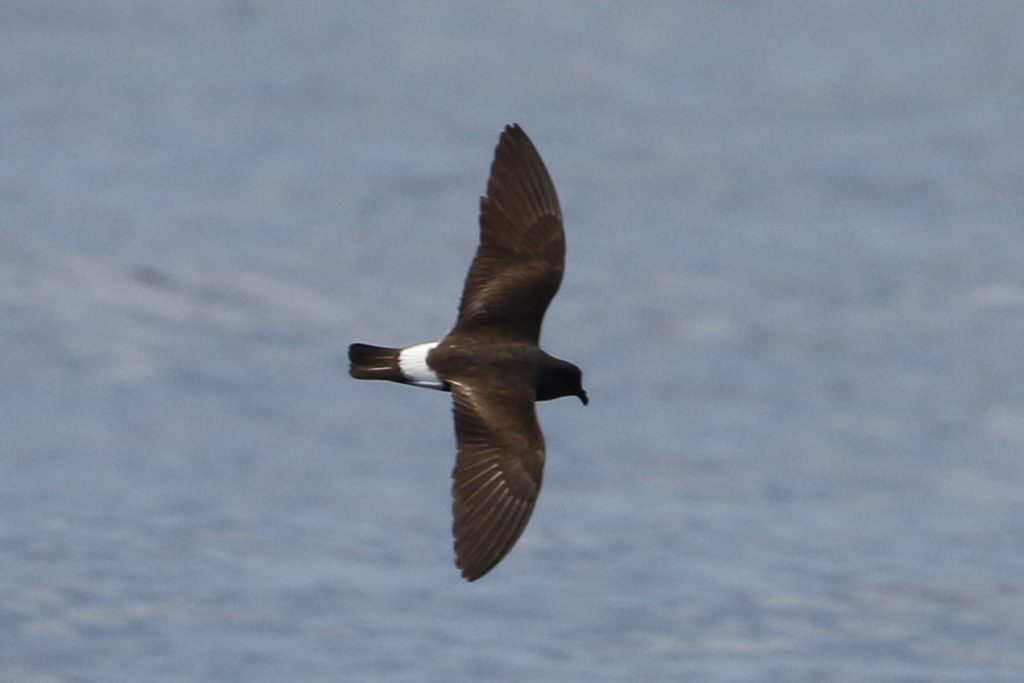
“Hawaiian Storm-Petrel”, H. c. cryptoleucurus, with heavily worn wing-coverts showing weak diagonal bars. (Offshore from Kailua-Kona, Big Island, Hawaii; July 23, 2016.) © Annie B. Douglas / Cascadia Research Collective
Like other band-rumped-type storm-petrels, “Hawaiian” is dark-brown overall, with an even white band across the rump that usually extends partway down the sides of the rump to the undertail. Its tail usually appears either square-tipped or shallowly notched.

“Hawaiian Storm-Petrel”, H. c. cryptoleucurus, showing typical flat-winged flight posture. (Offshore from Kailua-Kona, Big Island, Hawaii; September 2018.) © J. Bailey
As with most dark storm-petrels, all band-rumped-types typically show a paler brown or whitish diagonal stripe on the wing coverts, but the boldness varies depending on molt-stage and lighting. So the apparent color and boldness of the wingbar can provide clues to the age and molt-stage of closely observed individuals.
Juveniles and freshly molted adults have the most pronounced wingbars. On juveniles the bar appears silvery. On fresh adults, the bar is blond. With feather-wear, the bar diminishes and may disappear entirely by the time the next molt begins.
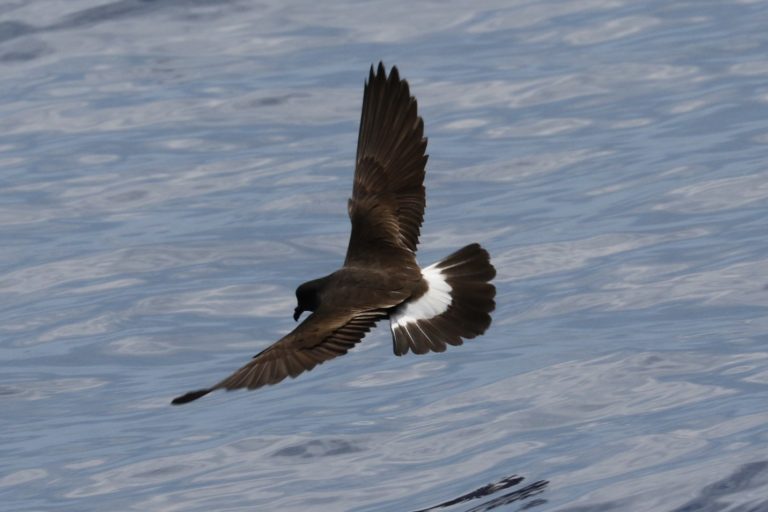
“Hawaiian Storm-Petrel”, H. c. cryptoleucurus, with heavily worn wing-coverts showing weak diagonal bars. (Offshore from Kailua-Kona, Big Island, Hawaii; July 23, 2016.) © Annie B. Douglas / Cascadia Research Collective
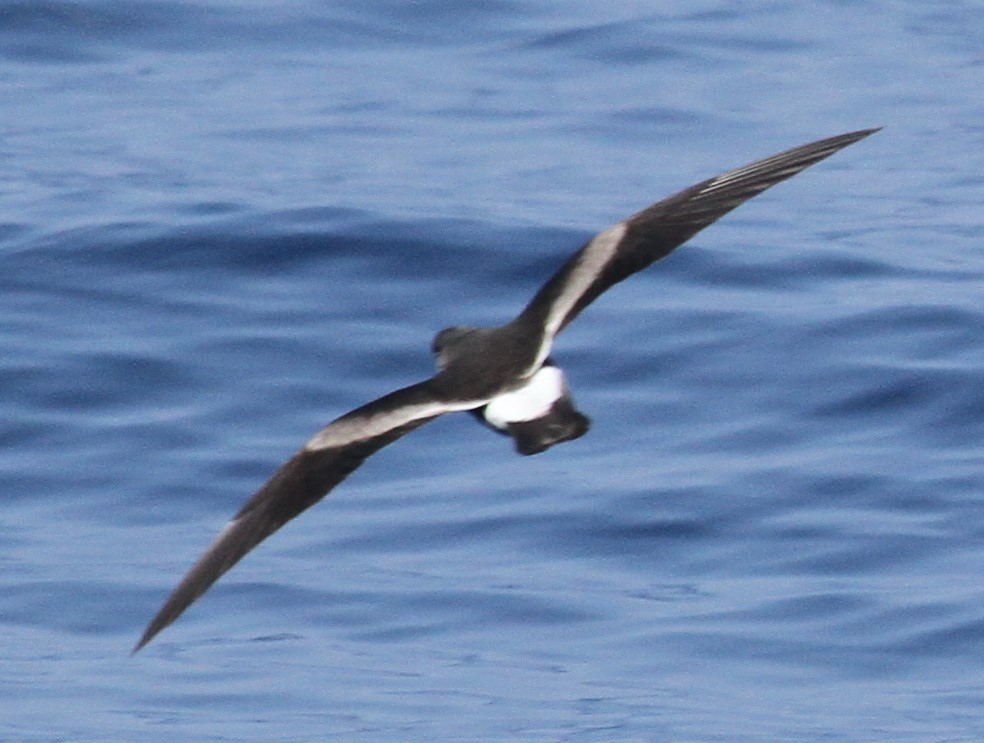
“Hawaiian Storm-Petrel”, H. c. cryptoleucurus, freshly molted juvenile, showing extremely bold white diagonal bars on wing-coverts. (Offshore from Kailua-Kona, Big Island, Hawaii; October 20, 2011.) © Daniel L. Webster / Cascadia Research Collective
Voice. The most typical call is a rapid, squeaky (like wet fingers rubbing glass) chatter, which inspired its Hawaiian name: ’Ake’ake. It consists of a stuttered or double-note followed by four to six distinct notes.
An alternative call consists of a barely audible rattle or purr followed by two or three squeaky chatter notes. (The sonogram below shows a faint rattle, then three clearly audible notes.)
’Ake’ake chatter call.

Notes
Monotypic form, one of seven or more potentially distinct forms of Band-rumped Storm-Petrel (castro), which is in the midst of taxonomic revisions. Eventually, it seems likely that the Pacific forms will be classified as one or more species separate from the Atlantic forms.
Howell and Zufelt (2019) provisionally classify of each Pacific breeding population as a separate species: “Japanese” (kamagai), “Hawaiian” (cryptoleucurus), “Darwin’s” (bangsi), and “Spear’s” (sp. nova). The latter two forms refer to seasonally distinct breeding populations of the Galápagos, which are not known to be distinguishable except based on their egg-laying calendars.
A study published in 2019 (Taylor et al.) concluded that all of the Pacific forms were closely related to one another, but also to one of the South Atlantic forms (helena). The close affiliation of the Pacific populations is not surprising, but their apparent affiliation with one Atlantic population presents an unanticipated complication.
See below for a comparison of “Hawaiian Storm-Petrel” with Leach’s Storm-Petrel.
Cf. Leach’s Storm-Petrel. In Hawaiian waters, the vast majority of white-rumped storm-petrels will be either “Hawaiian” or Leach’s (or possibly the near-identical Ainley’s Storm-Petrel). Unfortunately, they are nearly indistinguishable, even with high-quality photographs in many cases, except based on their flight patterns. Both are known to occur there in spring (April-May) and fall (September-November), whereas in summer (June-August) only “Hawaiian” is regularly present and in winter (December-March) only Leach’s has been confirmed.
Flight Pattern: When attempting to separate these species in the field, the most useful feature is flight pattern, although the relevant distinctions can vary according to the conditions—especially wind strength, direction of travel relative to wind direction, and the bird’s activity or purpose (e.g., foraging, transiting, etc.). To the extent that the variables can be factored appropriately, Leach’s and Band-rumped (including “Hawaiian”) differ in that Leach’s typically flies on deep strokes that produce an irregular, bounding, bouncing, batlike flight pattern, whereas Band-rumped typically flies on shallower strokes and glides, producing a steady flight pattern.
Rump and Tail: There is considerable overlap in most plumage features and wide internal variation within each species due to factors that include feather-wear or molt-stage, lighting, posture, and some degree of genetic or otherwise unexplained variation among individuals. In most cases, clear views of the rump and tail in multiple positions would be sufficient to identify any given individual—although any specific photo, even a close, clear photo, can sometimes produce an inaccurate conclusion.
As a rule of thumb, Leach’s has a more deeply notched tail and typically shows a more irregularly-shaped white area on the rump, often appearing like two ovals. Band-rumped (including “Hawaiian”), true to the name, usually has a more “band-shaped” white rump—in that it is slightly narrower and more even in width.
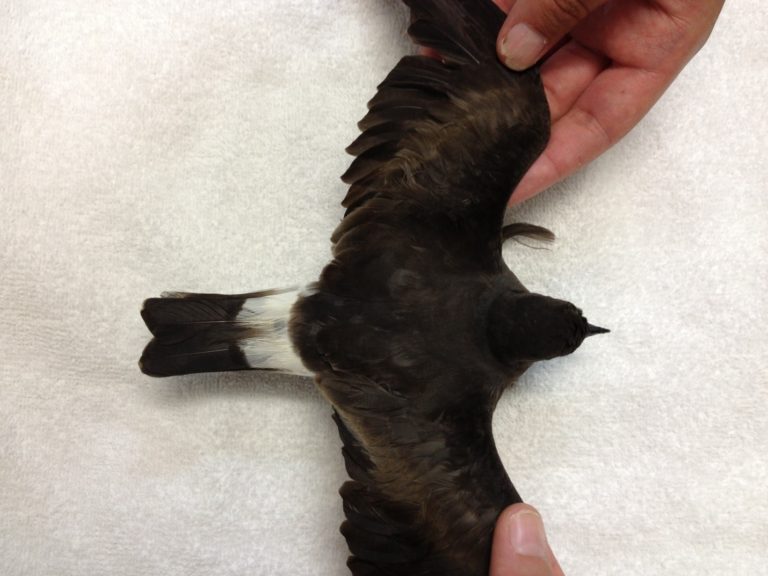
“Hawaiian Storm-Petrel”, H. c. cryptoleucurus, showing partly divided white rump. (Kauai, Hawaii; September 19, 2014.) © SOS-Kaua’i
On average, Band-rumped’s white rump extends farther down the sides of the rump than on Leach’s. This was formerly thought to be a reliable distinction, but more comprehensive research has shown that both species vary in this feature and there is significant overlap between them—so it is, in fact, entirely unreliable.
An apparently infallible distinction, useful mainly in the hand, is that Band-rumped’s longest uppertail coverts are white with broad dark tips, whereas Leach’s uppertail coverts are usually all-white, sometimes with limited dark corners.
Overall Coloration: In general, Leach’s is a paler, warmer shade of brown, whereas Band-rumped (including “Hawaiian”) is blackish-brown. This is difficult to judge in isolation but in certain lighting the extremes can be recognizable. For example, an individual that looks blackish in strong light is highly likely to be Band-rumped, and one that looks pale brown in dim light is highly likely to be Leach’s.

“Hawaiian Storm-Petrel”, H. c. cryptoleucurus, at left, with Leach’s Storm-Petrel. (Offshore from Kailua-Kona, Big Island, Hawaii; April 26, 2015.) © Daniel L. Webster / Cascadia Research Collective
Wings: Differences in the wings are difficult to generalize or evaluate, in part because the variation within each species exceeds the potential distinctions between them. Leach’s tends to holds its wings crooked at the wrist, and its wings tend to appear narrower and pointed, whereas Band-rumped often holds its wings nearly straight or slightly curved and the tips often appear somewhat rounded. This is often a useful clue, but rarely diagnostic.
Additional Photos of “Hawaiian Storm-Petrel”
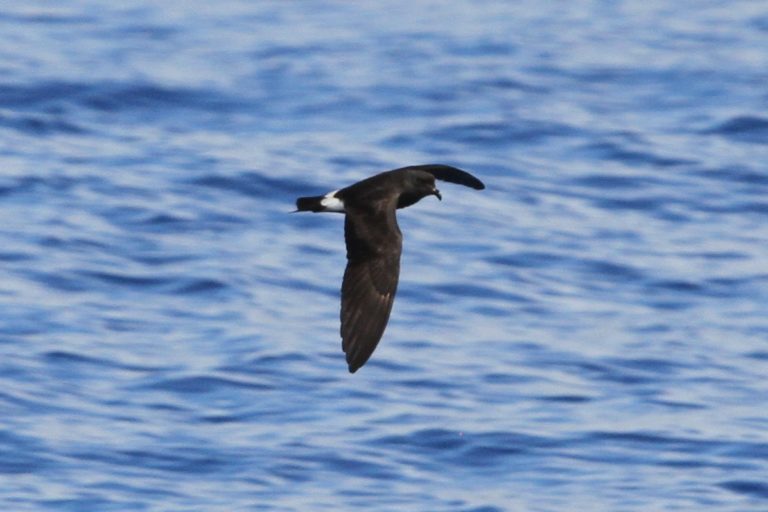
“Hawaiian Storm-Petrel,” T. c. cryptoleucura, with heavily worn wing-coverts showing no diagonal bars. (Offshore from Kauai, Hawaii; September 10, 2015.) © Deron S. Verbeek / Cascadia Research Collective
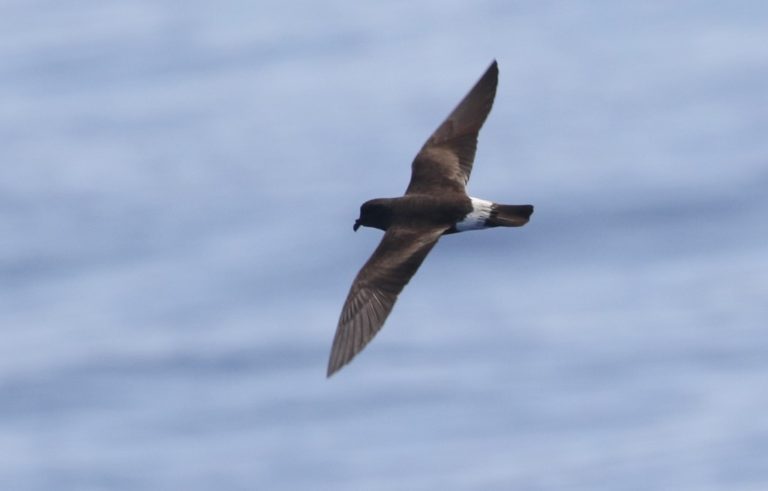
“Hawaiian Storm-Petrel”, H. c. cryptoleucurus. (Offshore from Kailua-Kona, Big Island, Hawaii; September 2018.) © J. Bailey

“Hawaiian Storm-Petrel,” T. c. cryptoleucura, freshly molted, showing strong diagonal bars on wing-coverts. (Offshore from Kauai, Hawaii; September 10, 2015.) © Deron S. Verbeek / Cascadia Research Collective
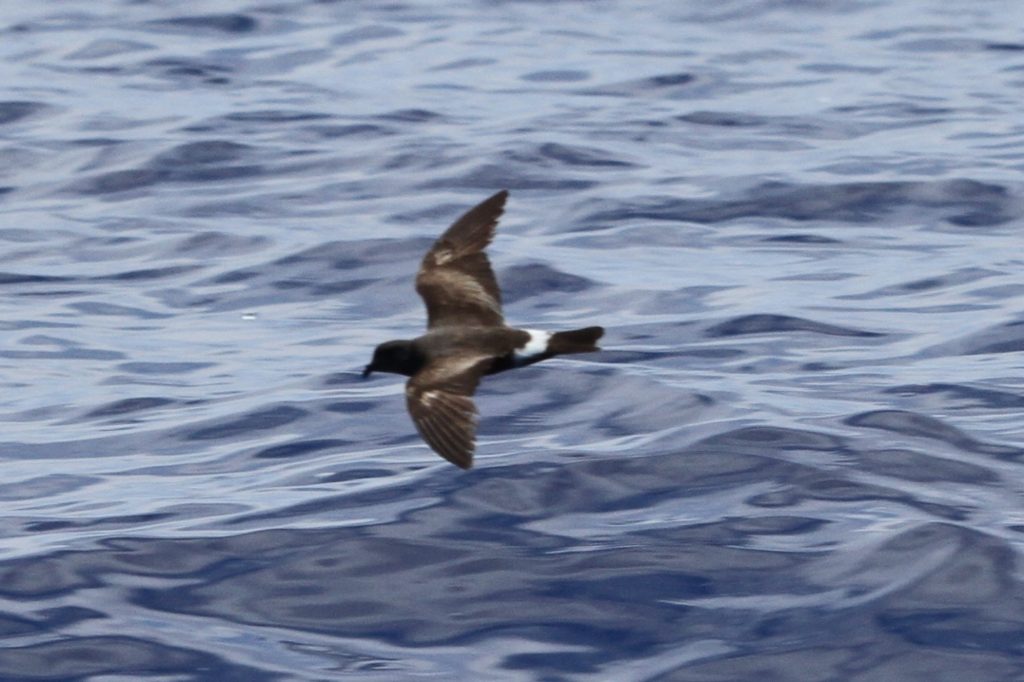
“Hawaiian Storm-Petrel,” T. c. cryptoleucura, freshly molted, showing strong diagonal bars on wing-coverts. (Offshore from Kauai, Hawaii; September 10, 2015.) © Deron S. Verbeek / Cascadia Research Collective
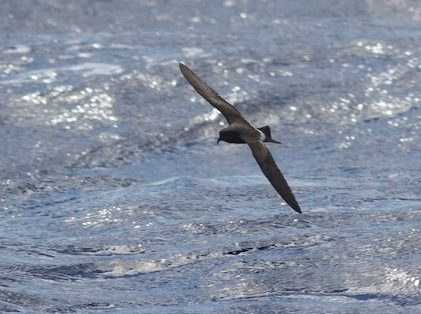
“Hawaiian Storm-Petrel,” T. c. cryptoleucura, in a typically shearwater-like glide. (Kaulakahi Channel, Kauai, Hawaii; June 12, 2016.) © Jacob Drucker
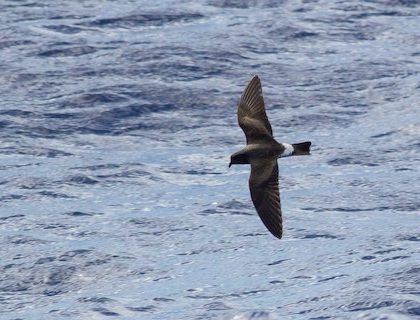
“Hawaiian Storm-Petrel,” T. c. cryptoleucura, with heavily worn wing-coverts showing weak diagonal bars. (Kaulakahi Channel, Kauai, Hawaii; June 12, 2016.) © Jacob Drucker
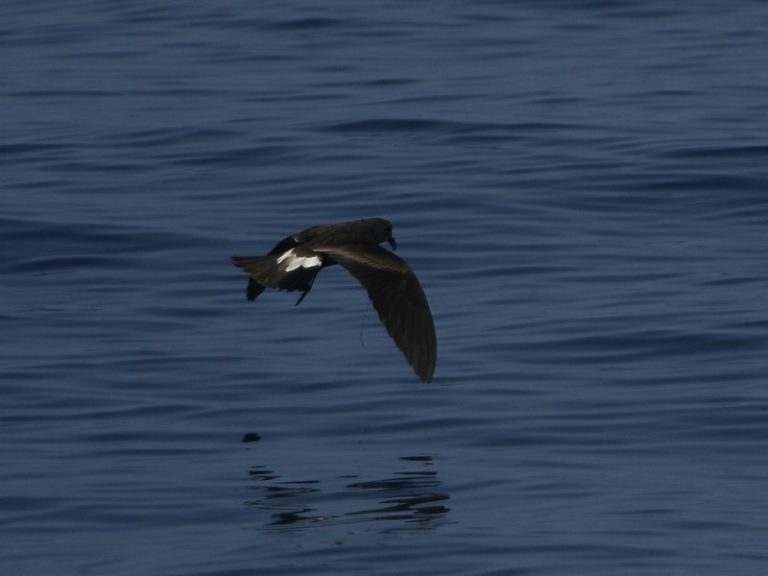
“Hawaiian Storm-Petrel,” T. c. cryptoleucurus, showing a prominent dark feather in the rump. (Offshore from Kailua-Kona, Big Island, Hawaii; April 14, 2012.) © Michael Walther
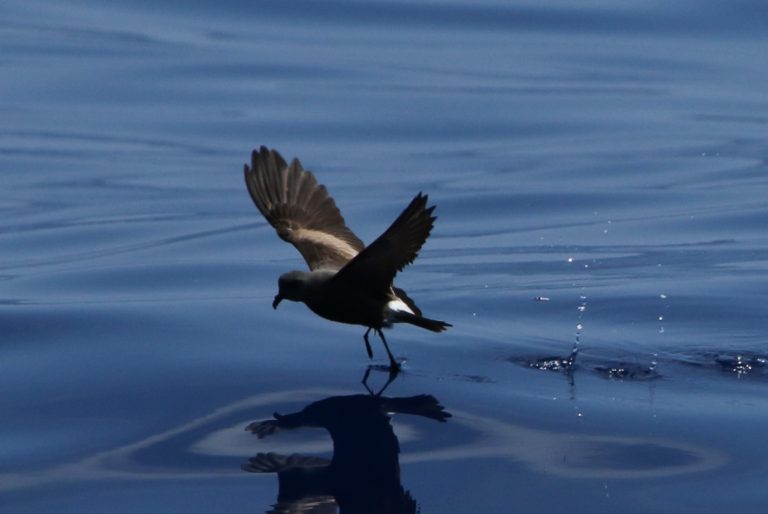
“Hawaiian Storm-Petrel,” T. c. cryptoleucurus, freshly molted, showing strong diagonal bars on wing-coverts. (Offshore from Kauai, Hawaii; October 27, 2013.) © Deron S. Verbeek / Cascadia Research Collective
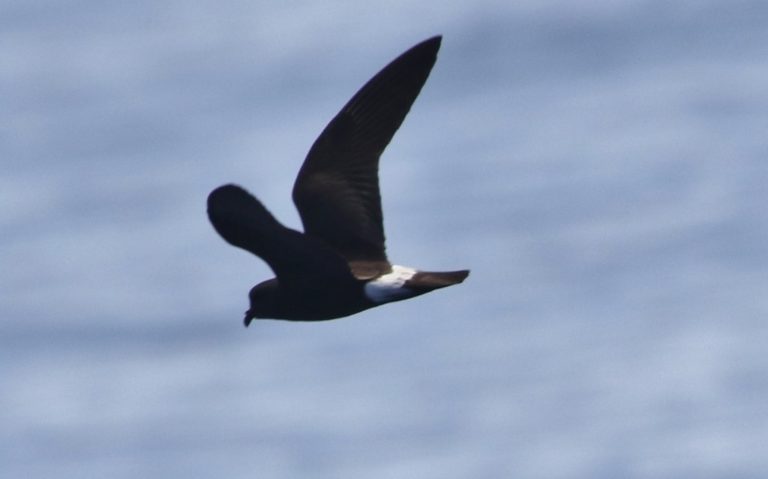
“Hawaiian Storm-Petrel”, H. c. cryptoleucurus. (Offshore from Kailua-Kona, Big Island, Hawaii; September 2018.) © J. Bailey

“Hawaiian Storm-Petrel”, H. c. cryptoleucurus, with wings bent back, suggesting Leach’s—but note square-tipped tail. (Offshore from Kailua-Kona, Big Island, Hawaii; September 2018.) © J. Bailey
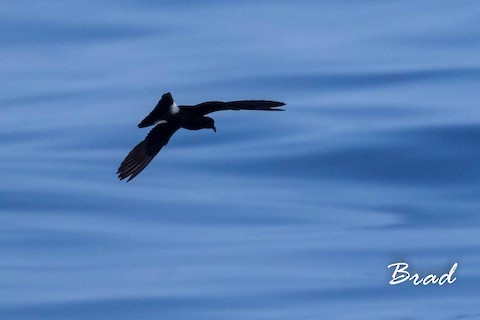
“Hawaiian Storm-Petrel,” T. c. cryptoleucura, showing white extending to undertail coverts. (Offshore from Kailua-Kona, Big Island, Hawaii; June 24, 2018.) © Brad Argue
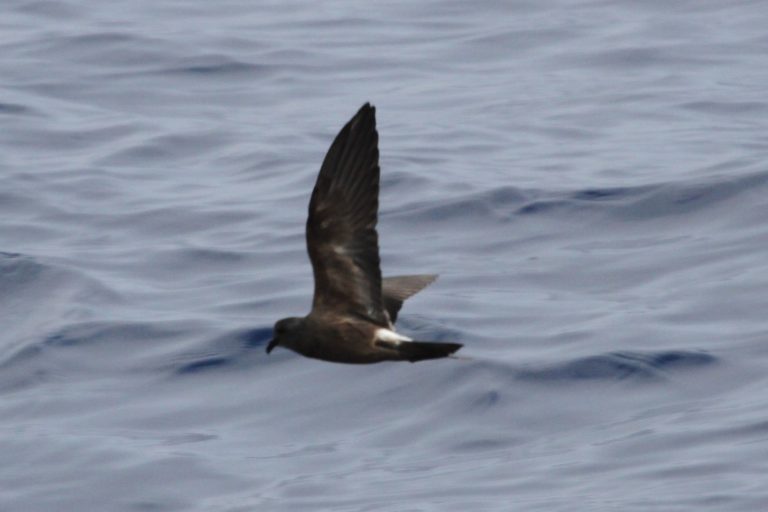
“Hawaiian Storm-Petrel,” T. c. cryptoleucurus. (Offshore from Kailua-Kona, Big Island, Hawaii; April 26, 2015.) © Daniel L. Webster / Cascadia Research Collective
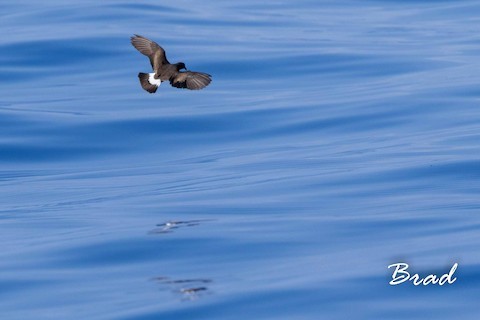
“Hawaiian Storm-Petrel,” T. c. cryptoleucurus, apparently changing direction at low speed. (Offshore from Kailua-Kona, Big Island, Hawaii; June 24, 2018.) © Brad Argue
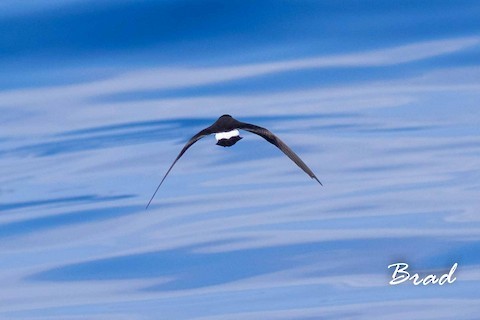
“Hawaiian Storm-Petrel,” T. c. cryptoleucurus. (Offshore from Kailua-Kona, Big Island, Hawaii; June 24, 2018.) © Brad Argue
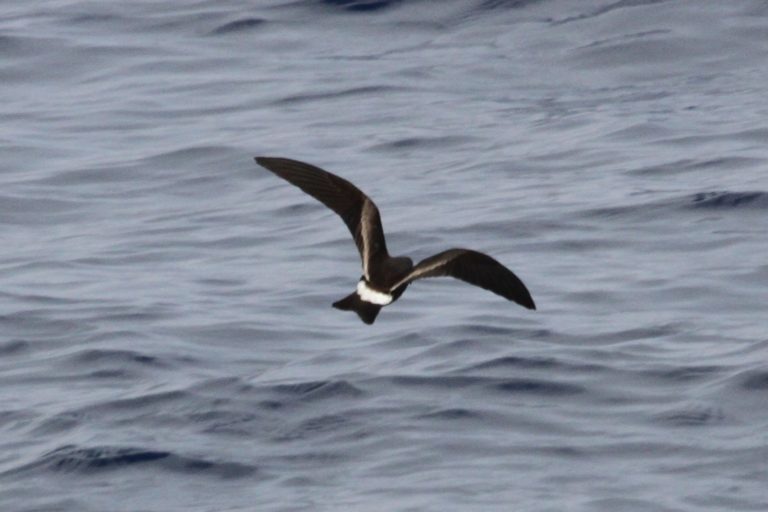
“Hawaiian Storm-Petrel,” T. c. cryptoleucurus, freshly molted, showing strong diagonal bars on wing-coverts. (Offshore from Kailua-Kona, Big Island, Hawaii; April 26, 2015.) © Daniel L. Webster / Cascadia Research Collective

“Hawaiian Storm-Petrel,” T. c. cryptoleucurus, freshly molted juvenile, showing extremely bold white diagonal bars on wing-coverts. (Offshore from Kailua-Kona, Big Island, Hawaii; October 22, 2009.) © Daniel L. Webster / Cascadia Research Collective
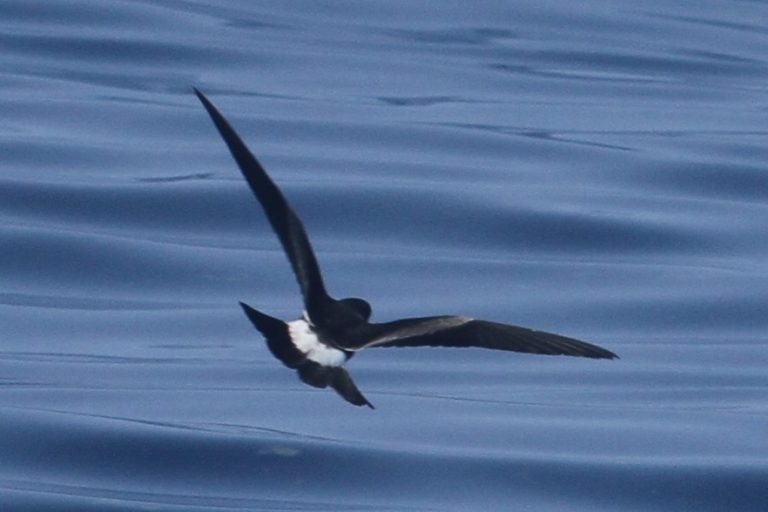
“Hawaiian Storm-Petrel,” T. c. cryptoleucurus. (Offshore from Kailua-Kona, Big Island, Hawaii; October 27, 2013.) © Robin W. Baird / Cascadia Research Collective
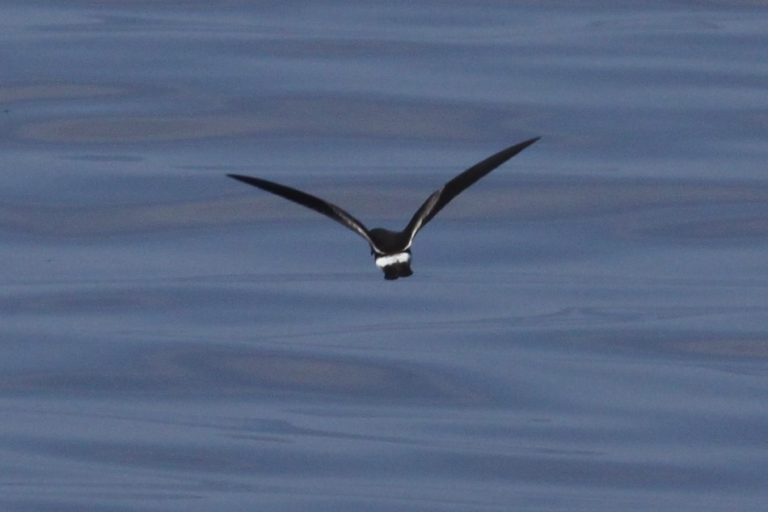
“Hawaiian Storm-Petrel,” T. c. cryptoleucurus. (Offshore from Kailua-Kona, Big Island, Hawaii; October 22, 2009.) © Daniel L. Webster / Cascadia Research Collective
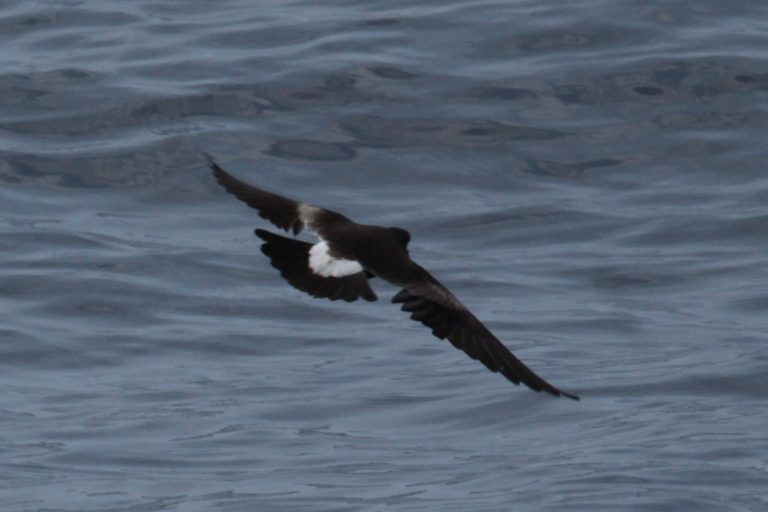
“Hawaiian Storm-Petrel,” T. c. cryptoleucurus. (Offshore from Kailua-Kona, Big Island, Hawaii; April 19, 2011.) © Daniel L. Webster / Cascadia Research Collective
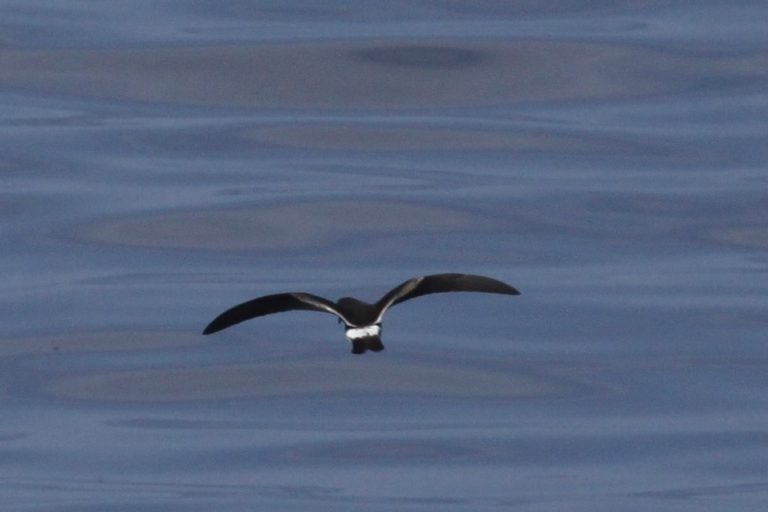
“Hawaiian Storm-Petrel,” T. c. cryptoleucurus. (Offshore from Kailua-Kona, Big Island, Hawaii; October 22, 2009.) © Daniel L. Webster / Cascadia Research Collective

“Hawaiian Storm-Petrel,” T. c. cryptoleucurus, showing a prominent dark feather in the rump. (Offshore from Kailua-Kona, Big Island, Hawaii; April 14, 2012.) © Michael Walther
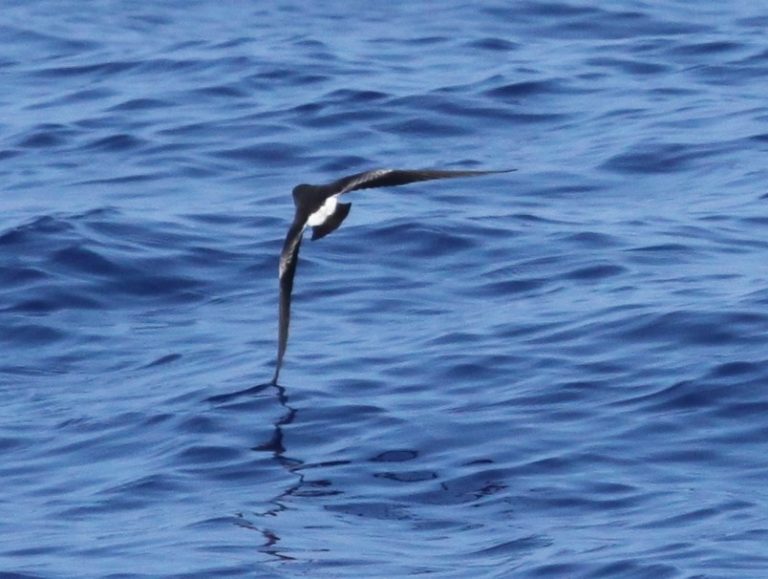
“Hawaiian Storm-Petrel,” T. c. cryptoleucurus. (Offshore from Kailua-Kona, Big Island, Hawaii; October 22, 2009.) © Daniel L. Webster / Cascadia Research Collective
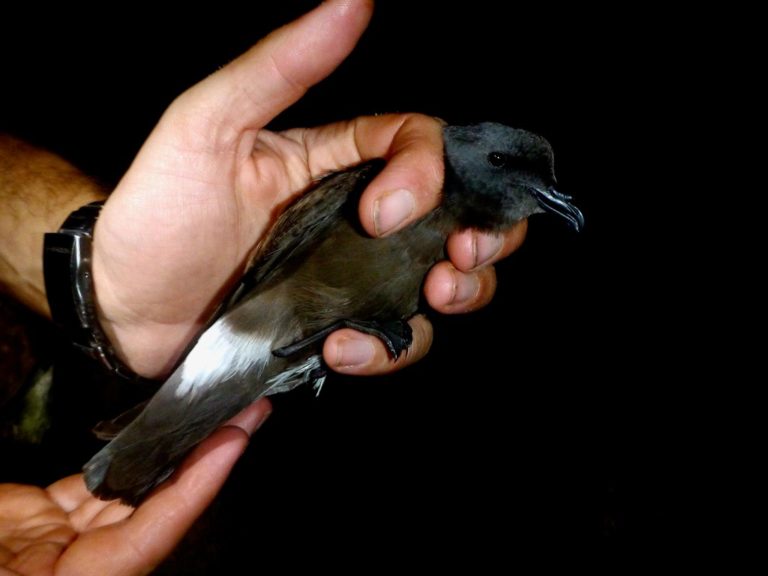
“Hawaiian Storm-Petrel”, H. c. cryptoleucurus. (Nualolo Kai, Na Pali Coast, Kauai, Hawaii; August 24, 2012.) © henicorhina
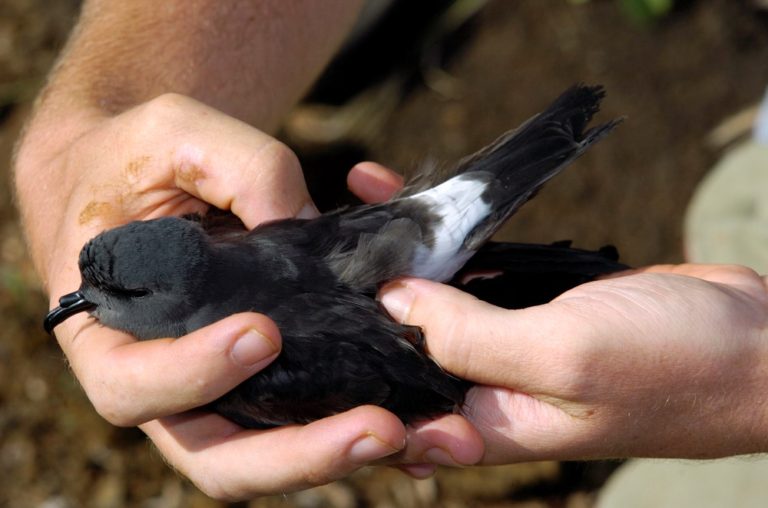
“Hawaiian Storm-Petrel,” T. c. cryptoleucurus. (Kauai, Hawaii; October 20, 2006.) © Jim Denny

“Hawaiian Storm-Petrel,” T. c. cryptoleucurus. (Kauai, Hawaii; September 19, 2014.) © SOS-Kaua’i

“Hawaiian Storm-Petrel,” T. c. cryptoleucurus, juvenile. (Kauai, Hawaii; November 4, 1977.) © G. Vernon Byrd
References
BirdLife International. 2018. Hydrobates castro. The IUCN Red List of Threatened Species 2018: e.T132341128A132433305. https://dx.doi.org/10.2305/IUCN.UK.2018-2.RLTS.T132341128A132433305.en. (Accessed December 20, 2021.)
eBird. 2021. eBird: An online database of bird distribution and abundance. Cornell Lab of Ornithology, Ithaca, N.Y. http://www.ebird.org. (Accessed December 20, 2021.)
Galase, N.K. 2019. First confirmed Band-rumped Storm Petrel Oceanodroma castro colony in the Hawaiian Islands. Marine Ornithology 47:25-28.
Harrison, P. 1983. Seabirds: An Identification Guide. Houghton Mifflin, Boston.
Howell, S.N.G. 2012. Petrels, Albatrosses & Storm-Petrels of North America. Princeton University Press.
Howell, S.N.G., and K. Zufelt. 2019. Oceanic Birds of the World. Princeton University Press.
Onley, D., and P. Scofield. 2007. Albatrosses, Petrels & Shearwaters of the World. Princeton University Press.
Pratt, H.D., P.L. Bruner, and D.G. Berrett. 1987. A Field Guide to the Birds of Hawaii and the Tropical Pacific. Princeton University Press.
Pyle, R.L., and P. Pyle. 2017. The Birds of the Hawaiian Islands: Occurrence, History, Distribution, and Status. Version 2 (January 1, 2017). http://hbs.bishopmuseum.org/birds/rlp-monograph/. B.P. Bishop Museum, Honolulu, Hawaii.
Pyle, P., D.L. Webster, and R.W. Baird. 2016. White-rumped Dark Storm-petrels in Hawaiian Island Waters: The quandary of Leach’s vs. Band-rumped storm-petrels throughout the world. Birding 48:58-73.
Taylor, R.S., M. Bolton, A. Beard, T. Birt, P. Deane-Coe, A.F. Raine, J. González-Solís, S.C. Lougheed, and V.L. Friesen. 2019. Cryptic species and independent origins of allochronic populations within a seabird species complex (Hydrobates spp.). Molecular Phylogenetics and Evolution 139:106552.
